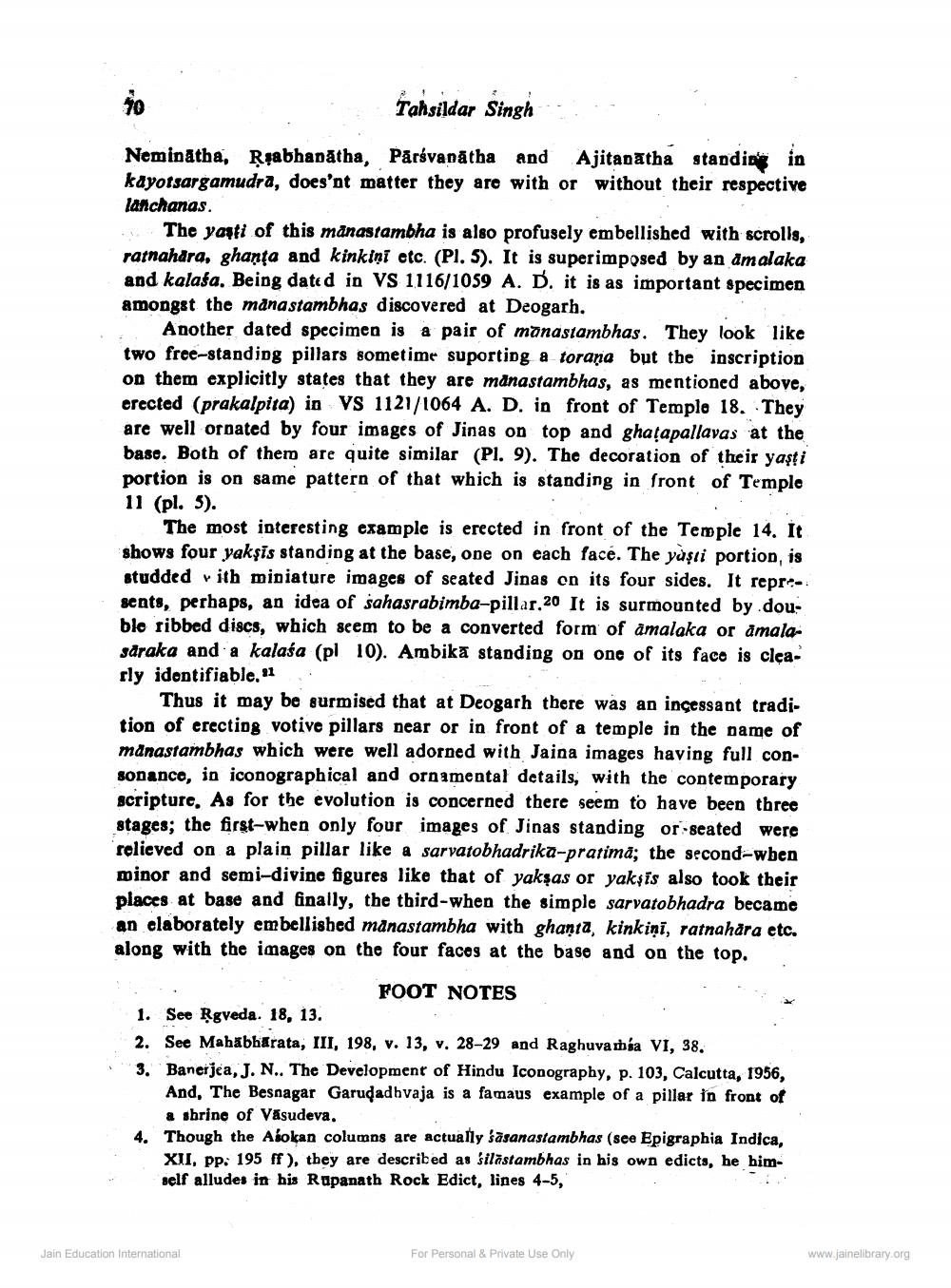________________
Tahsildar Singh Neminátha, ķşabhanātha, Parsvanātha and Ajitanātha standing in kayotsargamudra, does'nt matter they are with or without their respective lanchanas.
The yapti of this månastambha is also profusely embellished with scrolls, rarnahara, ghanga and kinkini etc. (Pl. 5). It is superimposed by an amalaka and kalasa. Being dated in VS 1116/1059 A. D. it is as important specimen amongst the manastambhas discovered at Deogarh.
Another dated specimen is a pair of monastambhas. They look like two free-standing pillars sometime suporting a torana but the inscription on them explicitly states that they are manastambhas, as mentioned above, erected (prakalpita) in VS 1121/1064 A. D. in front of Temple 18. They are well orbated by four images of Jinas on top and ghatapallavas at the base. Both of them are quite similar (Pl. 9). The decoration of their yaşti portion is on same pattern of that which is standing in front of Temple 11 (pl. 5).
The most interesting example is erected in front of the Temple 14. It shows four yakşis standing at the base, one on each face. The yaşti portion, is studded with miniature images of seated Jinas on its four sides. It reprosents, perhaps, an idea of sahasrabimba-pillar.20 It is surmounted by doublo ribbed discs, which seem to be a converted form of amalaka or amalasaraka and a kalasa (pl 10). Ambika standing on one of its face is clearly identifiable. 11
Thus it may be surmised that at Deogarh there was an incessant tradition of erecting votive pillars near or in front of a temple in the name of manastambhas which were well adorned with Jaina images having full consonanco, in iconographical and ornamental details, with the contemporary scripture. As for the evolution is concerned there seem to have been three stages; the first-when only four images of Jinas standing or seated were relieved on a plain pillar like a sarvatobhadrika-pratimā; the second-wben minor and semi-divine figures like that of yakşas or yaksis also took their places at base and finally, the third-when the simple sarvatobhadra became an elaborately embellished manastambha with ghanta, kinkiņi, ratnahara etc. along with the images on the four faces at the base and on the top.
FOOT NOTES 1. See Rgveda. 18, 13. 2. See Mahabharata, III, 198, v. 13, v. 28-29 and Raghuvamia VI, 38. 3. Banerjea, J. N.. The Development of Hindu Iconography, p. 103, Calcutta, 1956,
And, The Besnagar Garudadhvaja is a famaus example of a pillar in front of
a shrine of Vasudeva, 4. Though the Abokan columns are actually sāsanastambhas (see Epigraphia Indica,
XII. pp. 195 ff. they are described as silāstambhas in his own edicts, he himself alludes in his Rupanath Rock Edict, lines 4-5,
Jain Education International
For Personal & Private Use Only
www.jainelibrary.org




